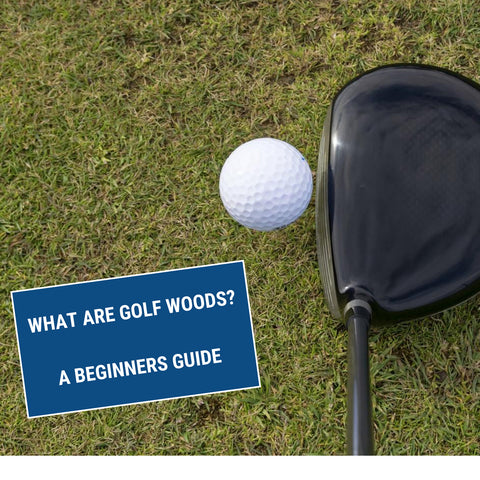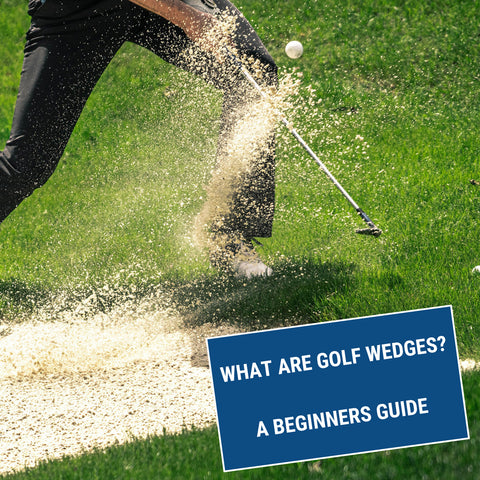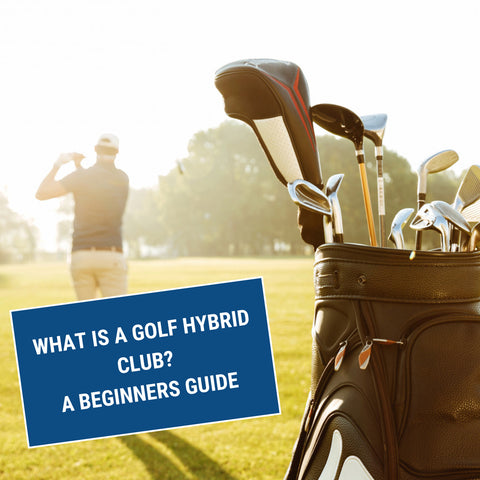Table of Contents
- Understanding Golf Woods
- Exploring Club Types and Features
- Choosing Between Fairway Woods and Hybrids
- Hitting Techniques and Tips
- Transitioning from Irons
- Top Brands and Technological Advances
- Overcoming Challenges
- Summary
- FAQ
In the grand tapestry of golf clubs, which we are covering in our series here, few elements hold as much allure and mystique as the resounding thud of a well-struck wood club. These clubheads, fashioned from cutting-edge materials and meticulously engineered, are the key to achieving those coveted long distances and mastering the intricacies of the golf course. Welcome to a journey through the world of golf woods.
Understanding Golf Woods
| Golf Wood Club | Characteristics | Common Uses | Advantages | Considerations |
|---|---|---|---|---|
| Driver (1-Wood) |
|
|
|
|
| Fairway Woods (3-Wood, 5-Wood, etc.) |
|
|
|
|
| Hybrids |
|
|
|
|
| Wedges |
|
|
|
|
Golf woods, often referred to simply as "woods," are a family of clubs designed to hit impressive distances on the course. They've earned their place in the golfer's bag for their exceptional ability to launch the ball across sprawling fairways and defy the obstacles that lie in wait. At the forefront of this clan stands the illustrious driver, a club with the most power and potential. Its massive clubhead and lengthy shaft are purpose-built to deliver the most colossal shots in a golfer's repertoire, making it an indispensable tool for tee shots on lengthy par-4s and par-5s.
But the world of golf woods is not limited to the driver alone. Fairway woods come into play when precision meets distance. With clubheads smaller than their driver counterparts, fairway woods strike a balance between control and power, making them ideal for fairway shots and approach play from the rough. Numbered woods like the 3-Wood, 5-Wood, and beyond offer varying degrees of loft and distance, allowing golfers to tailor their shots according to the course's demands.
The term "woods" is somewhat of a misnomer in modern times. While these clubs were once crafted from actual wood, technological advances have ushered in a new era of metal woods. Materials like titanium and graphite have revolutionized club construction, granting players enhanced durability, forgiveness, and precision.
Intriguingly, the evolution of golf woods mirrors the game's own journey through time. From the classic persimmon woods of yesteryears to the space-age metal woods of today, these clubs have been integral to the game's progression. In the following sections, we'll explore the intricacies of club types, their unique features, and the nuanced choices that can transform your game from good to great. So buckle up, for the fairway beckons, and our journey through the world of golf woods is just beginning.
Exploring Club Types and Features
When you step onto the tee, armed with your trusty wood club, you're wielding more than just a piece of equipment—you're holding a key to unlocking the full potential of your swing. Let's embark on a tour through the diverse family of golf woods, each with its unique attributes and a distinct role to play on the course.
At the forefront stands the formidable driver, often referred to as the 1-Wood. Its oversized clubhead and lengthy shaft are designed to maximize power, allowing you to unleash impressive drives that sail over fairways with an air of authority. Moving on, we encounter the fairway woods—3-Wood, 5-Wood, and beyond—each bearing a numerical designation that signifies its loft and intended use. These clubs strike a delicate balance between distance and accuracy, making them indispensable companions for approach shots and fairway play.
The heart of these wood clubs lies within their clubheads. Beyond their mere physical appearance, clubheads influence everything from launch angles to spin rates. The size of the clubhead, often expressed in terms of volume, impacts forgiveness and the club's "sweet spot." A larger clubhead offers a larger sweet spot, minimizing the effects of off-centre hits and increasing the chances of a solid shot.
Meanwhile, the concept of the centre of gravity (CG) holds immense significance in golf wood design. The CG, a point within the clubhead where all the weight is theoretically concentrated, profoundly affects ball flight. A lower CG encourages a higher launch angle and greater carry distance, while a higher CG promotes a flatter trajectory and increased roll upon landing. Understanding how the CG interacts with your swing can help you tailor your shots to suit the course's demands and your playing style.

Left Handed TaylorMade Mens Stealth Fairway Wood
Choosing Between Fairway Woods and Hybrids
The age-old debate of fairway woods versus hybrids has lingered on golf courses around the world, prompting golfers to ponder the best tools for their game. Each category offers distinct advantages, and the choice ultimately hinges on your preferences, playing style, and the challenges posed by the course.
Fairway woods, with their longer shafts and larger clubheads, offer the potential for greater distance. They're particularly adept at handling long fairway shots and demanding approach shots from the rough. However, their size might make them slightly trickier to control for some players.
Hybrids, on the other hand, combine the best of both worlds. With a design that melds features of irons and fairway woods, hybrids offer versatility and ease of use. They excel in handling challenging lies and can be more forgiving on off-centre hits. For players who struggle with long irons, hybrids can be a game-changer, providing added confidence and consistency.
As you contemplate whether to include both a 3 wood and 4 hybrid in your bag, consider the relative distances each club can achieve. While a 3 wood might have a slight edge in distance, a 4 hybrid could offer better control and accuracy. Likewise, when pondering the differences between a 3 hybrid and a 5 wood, assess the loft, shaft length, and how they align with your playing objectives.
In the dynamic world of golf, there's no one-size-fits-all answer. Your decision should reflect your strengths, weaknesses, and the strategic demands of the course. By understanding the nuances of fairway woods and hybrids, you can make informed choices that enhance your performance and make every swing count.
Hitting Techniques and Tips
Mastering the art of swinging a golf club is akin to orchestrating a symphony—each note must harmonize with precision. When it comes to wielding hybrids and fairway woods, finesse is your ally. Here are some insights to ensure that every swing is a crescendo of success:
Hitting Hybrids Effectively:
- Start with a smooth, controlled backswing. Avoid over-swinging, which can lead to inconsistency.
- Focus on making solid contact with the ball. Aim to strike the ball first, then let the clubhead follow through.
- Utilize a sweeping motion through the ball. Imagine skimming the grass rather than taking a divot.
- Play the ball slightly forward in your stance to encourage an ascending strike, optimizing launch.
Fairway Woods Swing Strategy:
- The question of whether to hit down with a fairway wood depends on the lie and desired shot trajectory. For fairway shots, a shallow strike is recommended to achieve a higher launch angle and longer carry.
- Aligning a golf ball with a hybrid involves positioning it slightly forward of centre, striking a balance between irons and woods. This encourages a rising trajectory off the clubface.
Hybrids: Like Irons or Woods? Tee or No Tee?:
- Hybrids often exhibit traits of both irons and woods. For beginners, adopting a swing resembling an iron shot can provide better control and accuracy.
- While hybrids can be teed up for specific shots, they're generally designed for shots off the turf. When teeing up, be cautious of making adjustments to your swing that might affect your consistency.
Transitioning from Irons
As golfers evolve, so does their equipment. The emergence of hybrids as iron replacements has reshaped the way players approach their shots. Here's a closer look at how these versatile clubs can integrate into your game:
Embracing Hybrids as Iron Replacements:
- Transitioning from irons to hybrids can offer enhanced playability, especially for longer shots.
- The comparison between a 4 hybrid and a 4 iron hinges on your swing style and the course conditions. Hybrids often provide a more forgiving strike and increased carry distance, making them a popular choice.
Substituting Fairway Woods with Hybrids:
- Replacing fairway woods with hybrids can provide greater accuracy and control, particularly on tighter fairways.
- Assess your game's demands and the shots you frequently encounter. If you find fairway woods challenging to hit consistently, hybrids might be the solution.
Navigating the world of hybrids and fairway woods is an expedition into both technique and strategy. As you hone your skills and become attuned to the subtleties of each club, you'll find yourself orchestrating shots that dance through the air and settle gracefully on the green. Remember, every swing is a brushstroke on the canvas of the course—a canvas that's yours to conquer.
These sections provide practical insights into hitting hybrids and fairway woods effectively while also exploring the advantages of transitioning from traditional irons to the more versatile hybrids. The tips and comparisons help golfers make informed decisions about their club selection and swing techniques.
Top Brands and Technological Advances
The world of golf woods has witnessed a lot of innovation over the recent years by industry leaders such as TaylorMade. These brands have made ground-breaking advancements that have redefined the limits of what wood clubs can achieve. Let's take a closer look at their contributions and the materials that propel golf woods into the future.
TaylorMade: Pioneers of Progress:
- TaylorMade has been a torchbearer in the evolution of golf woods, consistently pushing the boundaries of performance.
- Their commitment to research and development has birthed technologies like adjustable loft sleeves and aerodynamic shaping, fine-tuning the golfer's experience.
Materials That Transform:
- Titanium, a marvel of modern engineering, has revolutionized clubhead construction. Its lightness and strength permit the expansion of the sweet spot, enhancing forgiveness and distance.
- Graphite, the cornerstone of modern shafts, offers flexibility and control, transmitting the golfer's energy seamlessly to the clubhead.
Overcoming Challenges
As with any art form, mastery takes time and effort. Hitting hybrids and fairway woods is no exception, and challenges may arise. Fear not, for every hurdle presents an opportunity to elevate your game. Let's explore common challenges and ways to conquer them:
Tackling the Hybrid Struggle:
- Struggling with hybrid shots? Often, the cause lies in overthinking. Simplify your approach and focus on a fluid, rhythmic swing.
- Ensure your setup mirrors your iron stance, promoting consistency and comfort.
Mastering the Art of the Swing:
- Topping hybrids can feel frustrating, but remember, every golfer faces this at some point. The key is to focus on ball-first contact.
- Maintain your posture through the swing, avoiding the common mistake of lifting your body mid-swing.
A Path to Improvement:
- To improve hybrid shots, practice with intent. Devote time to the range, refining your swing mechanics and building muscle memory.
- Video analysis can offer insights into your swing, identifying areas for improvement that might not be apparent in the heat of the moment.
Summary
As we conclude our expedition through the realm of golf woods, let's reflect on the gems of wisdom that we've uncovered along the way. From the resounding thud of the driver to the finesse of fairway woods and hybrids, these clubs have a symphony of stories to tell. Here's a recap of the key insights that will undoubtedly elevate your game:
Getting Distance On Your Woods:
- Golf woods are your ticket to achieving awe-inspiring distances and navigating the course with precision.
- Different club types—driver, fairway woods, and hybrids—each have a unique role to play in your golfing journey.
Crafting the Perfect Swing:
- Clubheads, with their volumes and centres of gravity, influence your ball's flight and trajectory.
- Mastering the art of the swing—whether it's hitting hybrids like irons or aligning golf balls with hybrids—takes practice and finesse.
Tailoring Your Arsenal:
- The choice between fairway woods and hybrids depends on your playing style and course demands.
- The transition from irons to hybrids offers improved playability, while hybrids can potentially replace fairway woods for added accuracy.
FAQ
Q1. Is it better to have a 3 wood or 5 wood?
A1: The choice between a 3 wood and a 5 wood depends on your playing style and the distances you aim to achieve. A 3 wood typically provides more distance off the tee, while a 5 wood can offer better control and accuracy for fairway shots.
Q2. Do I need both a 3 and 4 hybrid?
A2: The decision to carry both a 3 and 4 hybrid depends on your preferences and the variety of shots you encounter. Hybrids can offer versatility and forgiveness, making them a valuable addition to your bag.
Q3. Will a 3 hybrid go further than a 5 wood?
A3: While a 3 hybrid can offer more control and versatility, a 5 wood often provides greater distance due to its larger clubhead and higher loft.
Q4. Do I need a 3 wood if I have a 2 hybrid?
A4: Having a 3 wood alongside a 2 hybrid can provide a well-rounded set of options for various situations. A 3 wood can offer more distance and a lower trajectory off the tee, complementing the 2 hybrid's versatility.
Q5. Are fairway woods easier to hit than hybrids?
A5: Fairway woods and hybrids have their unique challenges, but hybrids are often considered more forgiving due to their design that combines features of irons and woods.
Q6. Why do I hit my hybrid further than my 3 wood?
A6: The loft of a club plays a significant role in distance. A hybrid's lower loft can promote longer carry distances compared to a 3 wood, which has a higher loft.
Q7. Should you hit down with a fairway wood?
A7: The decision to hit down with a fairway wood depends on the lie and desired shot trajectory. For fairway shots, a shallower strike is often recommended to achieve a higher launch angle and longer carry.
Q8. Can you hit a 3 hybrid as far as a 3 wood?
A8: While a 3 wood is designed for maximum distance, a 3 hybrid can provide solid distance while offering better control and accuracy, especially for approach shots.
Q9. How do you hit a hybrid for beginners?
A9: Beginners can start by adopting a swing resembling an iron shot for hybrids. Focus on a smooth, controlled swing and solid ball-first contact.
Q10. How many wedges should you carry?
A10: The number of wedges you carry depends on personal preference and playing style. Most golfers carry at least a pitching wedge and a sand wedge, with some adding a gap or lob wedge for more versatility.
Q11. Do you hit a hybrid like an iron?
A11: Hybrids exhibit traits of both irons and woods. For beginners, swinging hybrids with a motion resembling an iron shot can provide better control and accuracy.
Q12. Do you tee with a hybrid?
A12: While hybrids can be teed up for specific shots, they're generally designed for shots off the turf. When teeing up, be cautious of making adjustments to your swing that might affect your consistency.
Q13. Should I swing my hybrid like an iron or a wood?
A13: Swing your hybrid with a motion resembling an iron shot for better control and accuracy. However, adapt your swing to the shot's demands, as hybrids can be versatile clubs.
Q14. Do you hit a hybrid off a tee?
A14: Yes, hybrids can be hit off a tee, especially for situations that require control and accuracy. Experiment with different tee heights to find what works best for you.
Q15. Where do you line up a golf ball with a hybrid?
A15: Align the golf ball slightly forward of center in your stance when hitting hybrids. This encourages an ascending strike and optimal launch.
Q16. Why do I struggle to hit a hybrid?
A16: Struggling with hybrid shots is a common challenge. Simplify your approach, practice with intent, and focus on making solid contact with the ball.
Q17. Why am I topping my hybrid?
A17: Topping hybrids can happen when you lift your body during the swing. Maintain your posture and focus on ball-first contact to avoid topping.
Q18. Will a 4 hybrid go further than a 4 iron?
A18: A 4 hybrid generally offers more forgiveness and distance than a 4 iron due to its design and technology. It can be a viable option for longer shots.
Q19. Is there a 15-degree hybrid?
A19: While hybrids are available in various lofts, a 15-degree hybrid might not be a common offering. Explore different loft options to find the best fit for your game.
Q20. Can you replace fairway woods with hybrids?
A20: Yes, replacing fairway woods with hybrids is a viable option for players seeking increased accuracy and control. Assess your game's demands and experiment with different club combinations.



